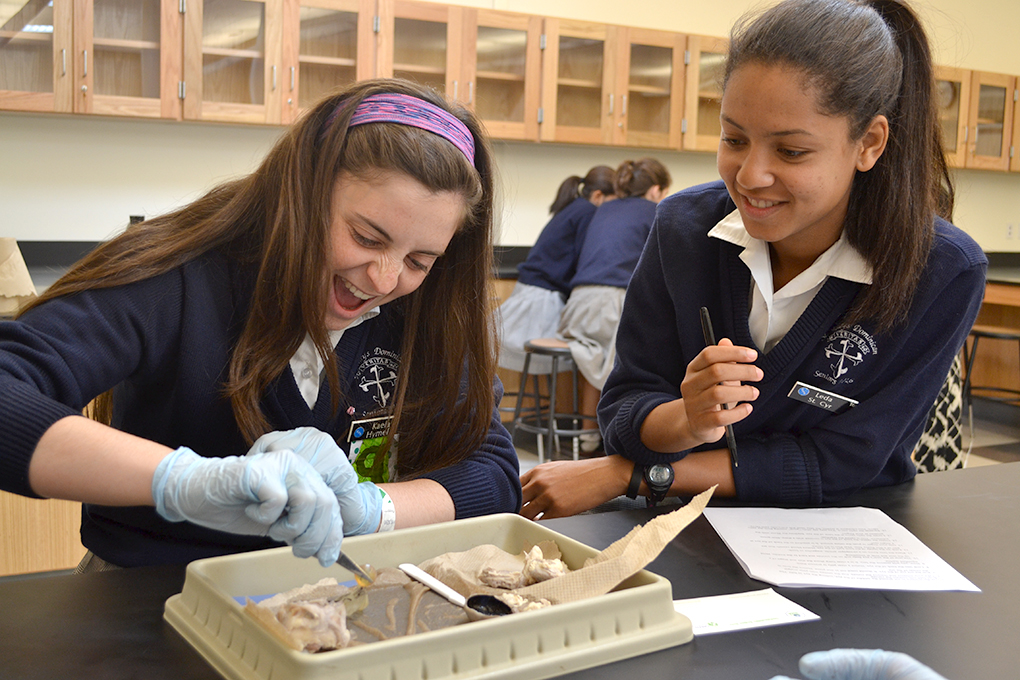
Image via stmarysdominican.org
Hands-on learning is almost always engaging — it involves a lot of activity that is generally different from the sit-‘n-get sorts of things students might normally be doing. And engagement is good: it means kids are immersed in the activity, paying full attention.
But…
It’s possible to have a hands-on, super engaging activity that doesn’t actually promote much learning. If the students don’t take time to make meaning out of the hands-on activity, it’s like a road to nowhere. Some hands-on activities are little more than multi-step rote memorization, requiring only Remembering — the lowest cognitive skill — to complete. Sometimes these hands-on projects can be heavy on the artwork and children end up being evaluated on their artistic abilities rather than on their mastery of the standard in question. If, for example, a student is asked to make a model of a landform out of clay but is not particularly dexterous with his or her fingers and what was supposed to be a plateau ends up looking more like a volcano (or maybe just a vague blob), how will that child be assessed? Did the child have fun? Sure. Did the activity contribute in a meaningful way to the child’s understanding of landforms? Probably not.
On the other hand, if the hands-on activity is tied to clear objectives and pushes the student to use higher-order thinking (Analyzing, Evaluating, Creating), then we can see a clear benefit to the activity as it relates to the child’s learning. Here are two examples:
Class A: 8th grade science students dissect a cow eye and follow a diagram to identify and describe the various structures. Students take a quiz on eye parts.
Class B: 8th grade science students dissect a cow eye and identify, draw, and describe the various structures, comparing and contrasting them to the structures of the human eye. Students will be able to trace the path of light through the structures and create a model of how the eye sees images. Students have an opportunity to talk to another science teacher who had lasik surgery and can ask questions about the procedure and its result. Students will debate whether it’s ethical to use animal body parts for study, giving reasons for and against. Be sure to discuss the source of the cow eyes (slaughterhouses) as part of the debate. Mini-unit concludes with each student writing an Op-Ed piece for the school newspaper arguing for or against using animal body parts for scientific study.
The base activity is hands-on — dissecting anything is going to be engaging and memorable. Class A never progresses past identifying structures (Remembering). There is no deep learning that is reinforced by the activity. Because of this, they are unlikely to remember much once the quiz or test is past, or at least, we can’t be sure what they will remember. Class B hits several higher-order thinking skills: Analyzing (compare and contrast), Evaluating (debate the ethics of using animal parts for study), and Creating (develop a model that explains how the eye sees, write an Op-Ed piece). Notice that Class B is clearly spending more time on the cow eye and its associated activities. The dissection is a springboard to those higher-order thinking skills rather than an end unto itself.
But, isn’t hands-on learning better than seat work even if it doesn’t push kids into deeper learning and higher order thought? To some extent, yes, but here I think it’s a “good is the enemy of best” situation. If we settle for good, we’ll never reach best.
Here’s a couple more resources on hands-on learning:
